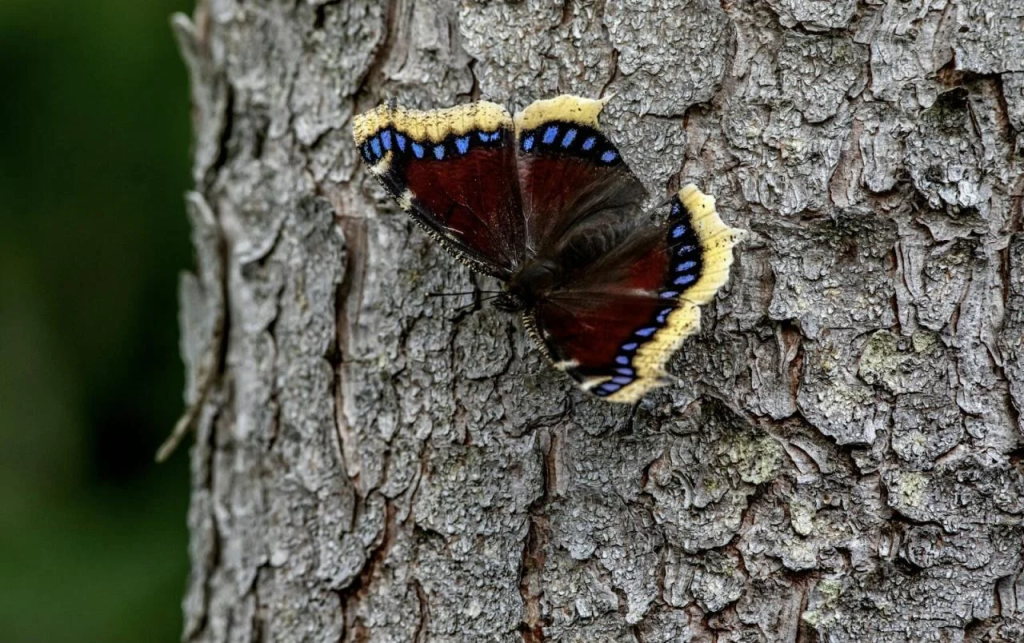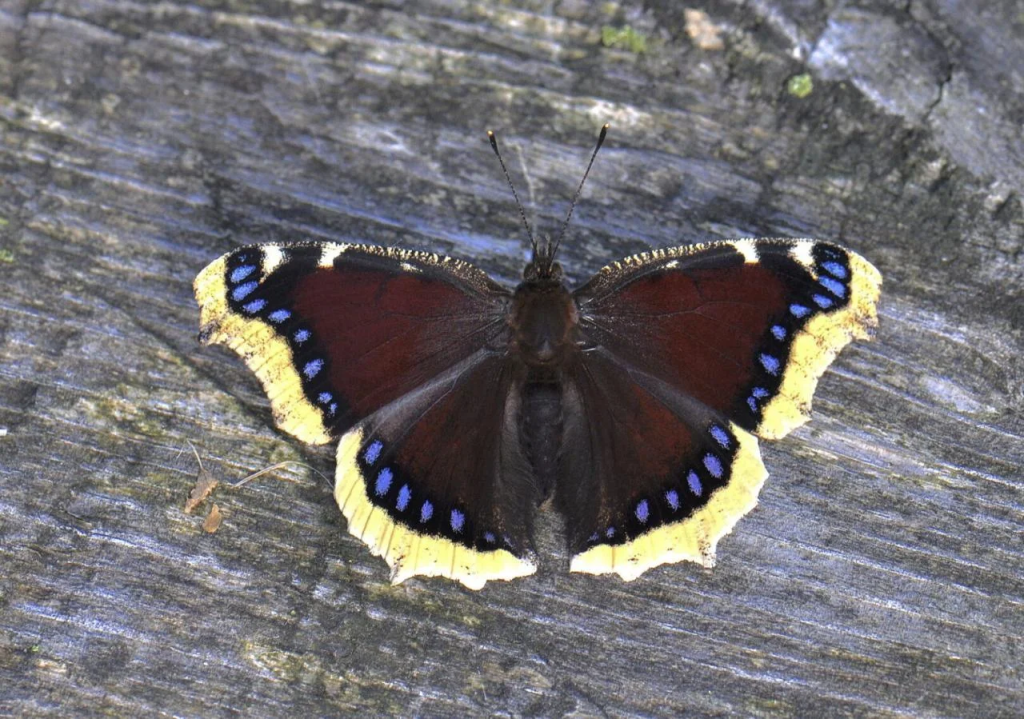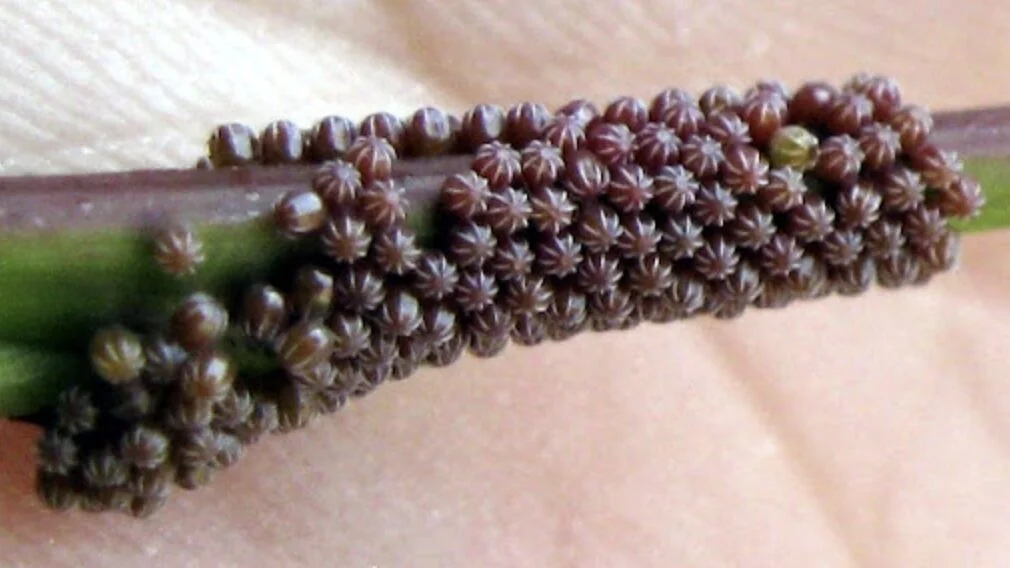Gardening is a rewarding hobby that brings a lot of joy to those who love watching their plants grow and thrive. However, it also comes with its challenges, especially when it comes to dealing with pests. It can be difficult to know which insects are helpful and which ones might harm your plants. Recently, I came across a picture on social media that perfectly captured this uncertainty. The image showed a leaf covered in tiny, intricate black patterns that looked almost alien. At first glance, I was worried, as it seemed like the leaf was infected with some strange disease or covered in an odd, extraterrestrial web. I wasn’t alone in my curiosity; many others wondered what it could be.
After doing some research, I discovered that these mysterious patterns are actually the eggs of the Mourning Cloak butterfly, also known by its scientific name, Nymphalis antiopa. If you’re not familiar with this butterfly, it’s a fascinating species with a unique life cycle and some interesting behaviors.
Let’s start with the eggs. The picture I saw was a close-up of these eggs on a leaf. They looked like a delicate layer of black lace, carefully laid out in a geometric pattern. Once I got over the initial shock, I found them to be quite beautiful. My first thought was, “This could either be very good or very bad for my garden.”

Fortunately, there’s good news. The Nymphalis antiopa butterfly, while it does have caterpillars that eat leaves, tends to prefer specific types of trees and shrubs like willows, elms, and poplars. So, if your garden is mostly filled with vegetables and flowers, you’re likely safe. Plus, these butterflies have a beneficial side: they feed on rotting fruit, helping with the natural decomposition process.
Watching the life cycle of the Mourning Cloak butterfly is quite a sight. After the eggs hatch, the caterpillars emerge, looking a bit intimidating with their black, spiky bodies dotted with tiny white spots. These caterpillars go through several stages called instars, where they grow larger and shed their skin.
When the caterpillars are fully grown, they find a safe place to transform into their next stage, the chrysalis. The chrysalis looks like a small, sleeping bag where the caterpillar undergoes its final transformation. Depending on the conditions, this stage can last a few weeks or even several months. When the butterfly finally emerges, it is a beautiful Mourning Cloak, with dark, velvety wings bordered with blue spots and a bright yellow edge.

One of the most interesting things about Mourning Cloak butterflies is their behavior. Unlike many other butterflies, they hibernate during the winter. They find a cozy spot under loose bark, in an old shed, or even in a pile of wood. They are often one of the first butterflies to appear in the spring, sometimes even before the flowers start to bloom. The dark wings of these butterflies contrast with the early spring landscape, giving them their name “Mourning Cloak,” as they resemble a somber, mourning garment.
As gardeners, it’s easy to focus on the immediate impact insects have on our plants. When we see caterpillars, we often worry that they will destroy everything. But it’s important to take a step back and look at the bigger picture. The Nymphalis antiopa butterfly is a perfect example of how nature maintains balance. While the caterpillars may eat some leaves, they won’t devastate your garden. In fact, by allowing these butterflies to thrive, you’re contributing to the health of the ecosystem.
So, what should you do if you find these caterpillars or eggs in your garden? My advice is to leave them alone. Enjoy watching the process and witnessing the transformation. If you’re really worried about your plants, you can gently move the caterpillars to a tree or shrub where they will be happy and less likely to munch on your precious flowers.

Gardening is all about balance. It’s about living in harmony with the creatures that share your space and the plants you love. The next time you spot something unusual in your garden, take a moment to investigate before reaching for the pesticide.


